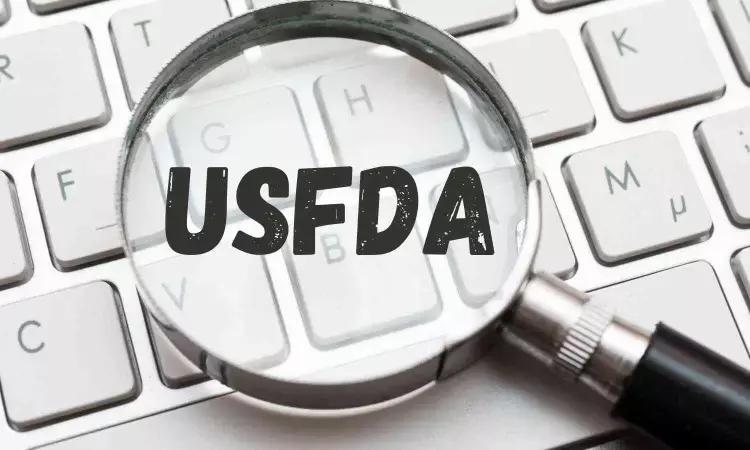- Home
- Medical news & Guidelines
- Anesthesiology
- Cardiology and CTVS
- Critical Care
- Dentistry
- Dermatology
- Diabetes and Endocrinology
- ENT
- Gastroenterology
- Medicine
- Nephrology
- Neurology
- Obstretics-Gynaecology
- Oncology
- Ophthalmology
- Orthopaedics
- Pediatrics-Neonatology
- Psychiatry
- Pulmonology
- Radiology
- Surgery
- Urology
- Laboratory Medicine
- Diet
- Nursing
- Paramedical
- Physiotherapy
- Health news
- Fact Check
- Bone Health Fact Check
- Brain Health Fact Check
- Cancer Related Fact Check
- Child Care Fact Check
- Dental and oral health fact check
- Diabetes and metabolic health fact check
- Diet and Nutrition Fact Check
- Eye and ENT Care Fact Check
- Fitness fact check
- Gut health fact check
- Heart health fact check
- Kidney health fact check
- Medical education fact check
- Men's health fact check
- Respiratory fact check
- Skin and hair care fact check
- Vaccine and Immunization fact check
- Women's health fact check
- AYUSH
- State News
- Andaman and Nicobar Islands
- Andhra Pradesh
- Arunachal Pradesh
- Assam
- Bihar
- Chandigarh
- Chattisgarh
- Dadra and Nagar Haveli
- Daman and Diu
- Delhi
- Goa
- Gujarat
- Haryana
- Himachal Pradesh
- Jammu & Kashmir
- Jharkhand
- Karnataka
- Kerala
- Ladakh
- Lakshadweep
- Madhya Pradesh
- Maharashtra
- Manipur
- Meghalaya
- Mizoram
- Nagaland
- Odisha
- Puducherry
- Punjab
- Rajasthan
- Sikkim
- Tamil Nadu
- Telangana
- Tripura
- Uttar Pradesh
- Uttrakhand
- West Bengal
- Medical Education
- Industry
USFDA warns pharma cos to remove misleading ads

The Food and Drug Administration (USFDA) and the U.S. Department of Health and Human Services have announced sweeping reforms to rein in misleading direct-to-consumer pharmaceutical advertisements.
Today, the FDA is sending thousands of letters warning pharmaceutical companies to remove misleading ads and issuing approximately 100 cease-and-desist letters to companies with deceptive ads.
“For far too long, the FDA has permitted misleading drug advertisements, distorting the doctor-patient relationship and creating increased demand for medications regardless of clinical appropriateness,” said FDA Commissioner Marty Makary, M.D., M.P.H. “Drug companies spend up to 25% of their budget on advertising. Those billions of dollars would be better spent on lowering drug prices for everyday Americans.”
Americans also live in a new era of social media. An increasing reliance on digital and social media channels, including undisclosed paid influencer promotion, has blurred the lines among editorial content, user-generated media and pharmaceutical advertising, making it increasingly difficult for patients to distinguish between evidence-based information and promotional material.
A 2024 review in the Journal of Pharmaceutical Health Services Research reveals that while 100% of pharmaceutical social media posts highlight drug benefits, only 33% mention potential harms. Moreover, 88% of advertisements for top-selling drugs are posted by individuals and organizations that fail to adhere to the FDA fair balance guidelines.
The stakes surrounding prescription drug ads are high. While these ads can raise awareness of disease states and beneficial therapies, they must also disclose important risks and limitations. Current law requires that advertisements present a fair balance between a product’s risks and benefits; avoid exaggerating benefits; not create a misleading overall impression; properly disclose financial relationships; and include information regarding major side effects and contraindications.
Despite widespread violations, the FDA has been increasingly lax and reactive in its enforcement approach over the last few decades. The FDA used to send more than a hundred warning letters each year, and misleading ads were rare. But over time, enforcement waned and the number of warning letters sent to pharmaceutical companies dropped to one in 2023 and zero in 2024.
The FDA will no longer tolerate such deceptive practices. Going forward, the agency will aggressively deploy its available enforcement tools. The FDA is already implementing AI and other tech-enabled tools to proactively surveil and review drug ads.
The Trump Administration and HHS Secretary Kennedy are committed to restoring transparency, accountability, and trust in health care. By closing loopholes and stepping up enforcement, the FDA will protect patients, safeguard public health and hold the pharmaceutical industry accountable.
Ruchika Sharma joined Medical Dialogue as an Correspondent for the Business Section in 2019. She covers all the updates in the Pharmaceutical field, Policy, Insurance, Business Healthcare, Medical News, Health News, Pharma News, Healthcare and Investment. She has completed her B.Com from Delhi University and then pursued postgraduation in M.Com. She can be contacted at editorial@medicaldialogues.in Contact no. 011-43720751
Dr Kamal Kant Kohli-MBBS, DTCD- a chest specialist with more than 30 years of practice and a flair for writing clinical articles, Dr Kamal Kant Kohli joined Medical Dialogues as a Chief Editor of Medical News. Besides writing articles, as an editor, he proofreads and verifies all the medical content published on Medical Dialogues including those coming from journals, studies,medical conferences,guidelines etc. Email: drkohli@medicaldialogues.in. Contact no. 011-43720751


